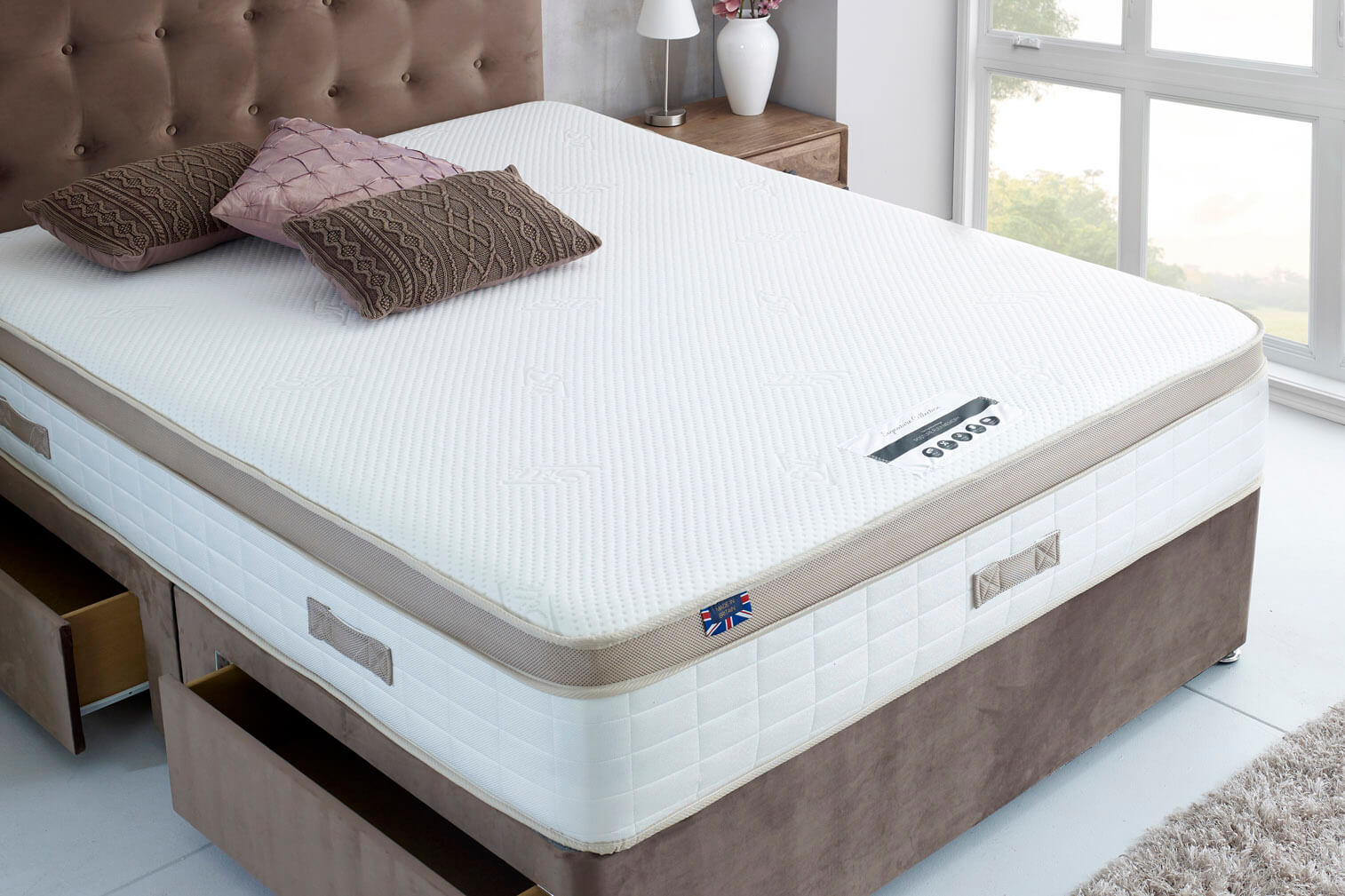Introduction
Investing in an orthopedic mattress is a wise decision for anyone looking to improve their sleep quality and spinal health. However, to ensure that your mattress, whether it’s an orthopedic memory foam mattress or a traditional orthopedic bed mattress, remains in top condition, proper maintenance is key. This guide, referencing insights from leading brands like WakeUp India, offers expert tips on how to maintain your orthopedic mattress for longevity.
Understanding Your Orthopedic Mattress
Before delving into maintenance, it’s crucial to understand what makes an orthopedic mattress unique. Whether you buy a mattress online or in-store, knowing its composition, be it memory foam, latex, or innerspring, will guide how you care for it.
Regular Rotation and Flipping
To prevent uneven wear and tear, rotate your mattress head-to-foot every 3-6 months. If it’s double-sided, flipping it over is also beneficial.
Use a Suitable Bed Base
Ensure your bed base or frame is compatible with your orthopedic mattress. An unsuitable base can cause damage and diminish the mattress’s orthopedic benefits.
Protecting Your Mattress
Invest in a high-quality mattress protector. This is essential to safeguard against spills, stains, and wear, especially for memory foam mattresses which can be sensitive to liquids.
Proper Cleaning Regimen
Clean your mattress regularly using a vacuum cleaner to remove dust and allergens. For stains, use mild detergent and spot clean, being careful not to soak the mattress.
Avoid Jumping on the Bed
Discourage children (or adults) from jumping on the bed, as this can damage the internal structure of the mattress, particularly in memory foam and orthopedic mattresses.
Managing Sunlight and Ventilation
Exposure to direct sunlight can deteriorate the materials of your mattress. Ensure good ventilation to prevent moisture buildup, which can lead to mold.
Addressing Spills Immediately
If a spill occurs, clean it immediately. Blot the area gently and allow it to air dry. Avoid using harsh chemicals or soaking the mattress.
Professional Cleaning
Consider professional cleaning once a year to maintain the hygienic quality of your mattress, especially if it’s used for orthopedic purposes.
Watching for Signs of Wear
Regularly inspect your mattress for signs of wear and tear. Sagging, lumps, or a noticeable decrease in support are indicators that it might be time for a replacement.
Understanding Warranty and Care Instructions
Familiarize yourself with the care instructions and warranty provided by the manufacturer. This ensures that you don’t accidentally void the warranty.
The Role of Pillows and Bedding
Use quality pillows and bedding that complement your orthopedic mattress. The right pillow, in particular, can enhance the orthopedic benefits.
Consider the Weight Distribution
Be mindful of weight distribution on the mattress. Over time, uneven weight can impact the structural integrity of the mattress.
Online Resources and Support
Utilize online resources and customer support, especially from brands like WakeUp India, for specific advice and tips on maintaining their products.
Balancing Room Temperature and Humidity
The longevity of your orthopedic mattress can be affected by the room’s climate. Keep the room at a moderate temperature and maintain balanced humidity to prevent materials from warping or breeding mold.
Avoiding Harsh Chemicals
When cleaning your mattress, avoid harsh chemicals that can break down the foam or fabric. Stick to gentle, mattress-friendly cleaning agents.
Investing in Quality Bedding
Quality bedding not only enhances sleep quality but also protects your mattress. Opt for breathable, natural fabrics that complement the mattress’s features.
Regular Inspection of Bed Frame and Box Spring
Regularly inspect your bed frame or box spring for any signs of wear or damage. A damaged base can affect the support your mattress provides.
Managing Allergens
For those with allergies, using hypoallergenic mattress covers and regularly cleaning the mattress can reduce the presence of allergens like dust mites.
Understanding the Specifics of Memory Foam Care
If your orthopedic mattress is made of memory foam, be aware that it requires specific care, such as avoiding excessive heat and ensuring proper support from the base.
Handling Moving and Storage
If you need to move or store your mattress, do so with care. Keep it flat and avoid folding or bending, which can damage the internal structure.
Keeping Pets Away
As much as we love our pets, keeping them off the bed can prevent damage and keep the mattress clean.
Using a Mattress Topper
Consider adding a mattress topper for additional comfort and protection. It can extend the life of your mattress and can be easily replaced if worn out.
Knowing When to Upgrade
Lastly, be mindful of your mattress’s performance over time. If your sleep quality diminishes or if you start experiencing discomfort, it may be time to consider an upgrade.
Conclusion
Proper maintenance of your orthopedic mattress is essential for ensuring its longevity and maintaining its health benefits. By following these expert tips, you can extend the life of your mattress, ensuring that it continues to provide support and comfort night after night. Remember, a well-maintained mattress is not just an investment in your sleep, but also in your overall well-being.
FAQs
- How often should I replace my orthopedic mattress?
- It varies, but typically every 7-10 years, depending on its condition and how well it’s maintained.
- Can I use electric blankets with my memory foam mattress?
- It’s best to check with the manufacturer, as heat can affect the memory foam’s structure.
- What’s the best way to remove odors from my mattress?
- Sprinkling baking soda and vacuuming it off after a few hours can help eliminate odors.
- Is it necessary to buy a mattress cover?
- Yes, a mattress cover helps protect against dust, spills, and allergens.
- How can I tell if my mattress is worn out?
- Signs include sagging, lumps, and a decrease in comfort and support.
- How can I prevent my memory foam mattress from sagging?
- Regular rotation and using a supportive base can help prevent sagging.
- Is it okay to sit on the edge of my orthopedic mattress?
- Frequently sitting on the edge can cause premature wear; it’s best to minimize this.
- How do I deal with a squeaky bed frame?
- Tighten all the screws and joints, and check for any broken slats or springs.
- Can I dry-clean my mattress cover?
- Check the manufacturer’s care instructions, as some covers may not be suitable for dry cleaning.
- What should I do if I spill something on my mattress?
- Blot the spill immediately and clean with a mild detergent, avoiding soaking the mattress.



